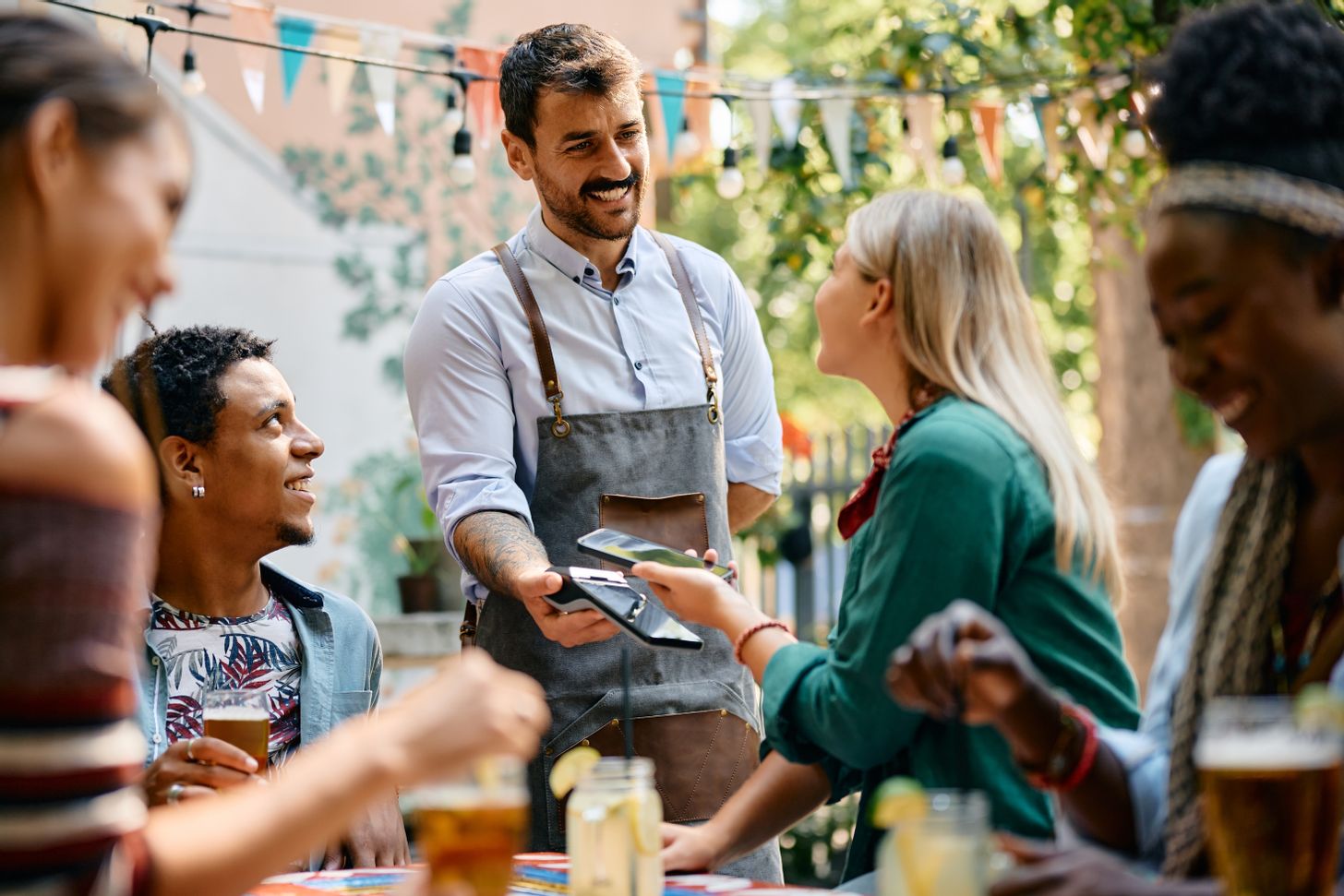Latin America: How real-time and mobile rails are setting a new baseline

Real-time rails, mobile-first innovation, and hybrid payment ecosystems are transforming Latin America into the world's fastest-growing digital payments region.
What you need to know
Home to 638M people, Latin America is experiencing dynamic digital payment growth, on track for a 29% CAGR in real-time payments by 2027.
Alternative payment methods (APMs) are projected to overtake cards in key markets next year, led by solutions like Brazil's Pix and Peru's Yape
Real-time payment systems now operate across the region, with Brazil's Pix processing over 7 billion transactions monthly
Local innovators like Nequi, OXXO Pay, and Yape are transforming how people and businesses buy, sell and interact daily
Crypto adoption is surging, making Latin America the world's second-fastest growing crypto market
This blog continues our series based on dLocal's Emerging Markets Payments Handbook 2025.
A generation revolutionizing how Latin America pays
Latin America's payment transformation starts with its people. With 80% of the region's 638 million residents using smartphones, mobile devices have become the primary gateway to digital commerce. Rising incomes and urbanization, expanding internet access, and growing digital literacy are making eWallets, instant payments, and social commerce part of everyday life.
The region's demographic momentum is undeniable. A young, increasingly urban population is bypassing traditional banking infrastructure and embracing mobile-first financial services. In markets like Colombia, Brazil, and Peru, millions are experiencing their first digital payment through an eWallet or real-time transfer, rather than a credit card.
This move reflects more than just technology adoption. It represents a fundamental change in how Latin Americans think about money, commerce, and financial access. Where traditional banks once struggled to reach underserved populations, mobile-native solutions are creating new pathways to participation in the digital economy.
The story behind LATAM’s eCommerce transformation
eCommerce in the region is experiencing unprecedented growth, driven by mobile-first consumers and improved payment infrastructure. From Mexico's bustling digital marketplaces to Brazil's subscription economy surge, online shopping has become a lifestyle choice rather than just a convenience.
In countries like Colombia and Chile, digital payments are quickly gaining ground in sectors where speed and security matter most, like ride-hailing, streaming, and online retail. While cash still plays a role in some markets, digital methods are rapidly capturing market share.
What makes this growth particularly compelling is its breadth. Unlike other regions where eCommerce growth concentrates in major cities, Latin America's digital commerce expansion reaches into mid-sized urban centers and suburban areas, powered by mobile connectivity and locally relevant payment options.
Real-time rails: Transforming daily transactions
Real-time payment systems are reshaping how money moves across Latin America. Brazil's Pix leads the charge, processing over 7 billion transactions monthly and fundamentally changing consumer expectations around payment speed. Mexico's SPEI, Colombia's new Bre-B, and Costa Rica’s growing real-time infrastructure are creating a new baseline for instant transfers.
These systems aren't just faster versions of existing rails, they're creating entirely new behaviors. In Brazil, Pix has made person-to-person transfers as simple as sending a text message. In Colombia, real-time payments are starting to support the growth of informal commerce and small business transactions. Across the region, instant settlement is becoming the expected standard.
The impact extends beyond convenience. Real-time rails are supporting financial inclusion by connecting users directly to their banks through mobile apps and QR codes. For millions of Latin Americans with limited access to traditional banking services, these systems represent their first reliable connection to formal financial infrastructure.
Hybrid ecosystems: Cards and APMs working together
A defining feature of Latin America's payment landscape is its installment-based culture, which is a major driver behind the rise of hybrid payment models. Unlike other regions where payment methods compete for dominance, Latin America is developing sophisticated ecosystems where cards and alternative payment methods (APMs) complement each other to meet diverse consumer needs.
Credit and debit cards hold a unique strength in the region—not only are they widely accepted for higher-value purchases, cross-border transactions, and subscription services, but their installment functionality makes them essential. However, access to credit is still limited for many consumers, and even those with cards often face low credit limits. That gap has opened the door for BNPL solutions, which offer installment-like affordability without relying on traditional credit lines.
For everyday spending, peer-to-peer transfers, and small merchant payments, local APMs are increasingly preferred. In Mexico, OXXO bridges offline and online commerce through 22,000+ convenience stores. In Peru, Yape has become the default choice for millions of users making everyday purchases.
This hybrid approach reflects Latin American consumer behavior: pragmatic, value-conscious, and comfortable with managing money across multiple channels. Consumers fluidly switch between payment methods depending on context, merchant acceptance, and personal preference.
Regional insights: Payments shaping Latin America's growth
Brazil: The region's payment powerhouse, where Pix has overtaken credit cards in volume in eCommerce. Regulatory innovation in the country continues to drive fintech growth and financial inclusion.
Mexico: A massive market where traditional cash-based commerce is digitalizing fast. SPEI and OXXO are gaining ground, supported by growing merchant acceptance. Remittance flows remain a key driver, with cross-border payments fueling demand for faster, lower-cost transfers. BNPL options like Kueski are growing too, offering more flexibility.
Colombia: A fintech-ready economy with strong regulatory support for innovation. Nequi's 8 million users and Bre-B’s new infrastructure position the country for rapid payment modernization. Remittances play a significant role here as well.
Argentina: Despite economic volatility, digital payments are thriving. eWallets, like the popular MODO, power over half of eCommerce transactions, demonstrating resilience and adaptation in challenging conditions.
Chile: A digitally mature gateway market with high banking penetration and growing fintech adoption. Real-time payments and eWallets are complementing traditional card-based infrastructure.
Peru: A transitioning ecosystem where eWallets like Yape are gaining ground against traditional debit cards, supported by government initiatives promoting financial inclusion.
Despite the fast growth of digital payments and innovation, access remains an ongoing challenge. Millions of people still operate outside the formal system, a reminder of how central APMs are in closing the financial inclusion gap and reaching underserved communities.
Key takeaways
Latin America's payment landscape is evolving fast, defined by real-time infrastructure, mobile-first adoption, and hybrid payment ecosystems
Real-time payments are becoming the new standard, with systems like Pix, Transferencias 3.0 and SPEI changing consumer expectations
Alternative payment methods are expected to surpass cards in key markets by 2026, driven by mobile adoption and local innovation
Hybrid ecosystems where cards and APMs complement each other are creating rich, diverse payment environments
Local innovators like Nequi, OXXO Pay, Yape, and MODO are driving digital commerce adoption across diverse demographics
Crypto adoption is surging, making Latin America a key market for digital asset innovation and cross-border transactions
What's next in this series
Next in our series: We'll explore how different emerging countries are developing distinct payment identities, with insights drawn from dLocal's Emerging Markets Payments Handbook 2025.
Get in touch with our payment experts
We help global companies such as Amazon, Spotify, and Microsoft find new opportunities in high-growth markets. Let's think outside the box for tailor-made payment solutions for your business. Fill out this form, and we'll get back to you as soon as possible.
Contact us





